The insert for Second Thoughts is a Jinteki internal communication in regards to Project Nisei. It details a recent evaluation of Subject C (Caprice Nisei) where partway through the session, the subject experienced a massive traumatic event. A footnote at the end notes that the time of the event corresponds to a massive tsunami hitting lower Guayaquil, resulting in massive loss of life. So we know that New Angeles was hit by a devastating tsunami, but what is the connection to the bioroid intrusion from last time? We will come back to that later, as for now, it is time to examine the new cards from this pack.
Bishop
Another Caïssa program. This time, it costs 0 to install, and lowers the strength of the hosted ice by 2. Also, its movement pattern requires it to switch between central and remote servers, which means that it will take 1 or 2 clicks to get it from its current position to where you want it. Taking into consideration how the rest of the Caïssa set has worked so far, it seems that the Caïssa suite is meant to augment the existing Anarch breaker suite. With this, you can potentially lower a piece of ice into the range where it can be dealt with more easily by the fixed strength breakers. Of course, it works better if you already know which piece of ice it needs to be on, so some expose effect may be beneficial.
Pair cards: Mimic, Yog.0, Infiltration, Pawn, Deep Red
Scheherazade
A unique daemon. This card takes up no memory and is free to install. It can host any number of programs, but be aware that those programs will still take up your memory. Plus, whenever you install a program into Scheherazade, you gain 1 credit. Essentially, this refunds you 1 credit for every program install. So if you install a 0 cost program into it, you get the program and a credit as well. Of course, if Scheherazade is destroyed, all the programs on it will be lost as well. Still, this card was the driving force behind the Street Chess archetype. It is harder to pull off Street Chess now due to the Most Wanted List, but there are still possibilities with this card.
Trivia: The card name and flavor text are both references to One Thousand and One Nights, a collection of Middle Eastern and South Asian stories and folk tales. The framing device for these stories is that Scheherazade becomes wife to the Shahryār, a ruler over part of China and India, who intends to execute her after one night. However, she tells a long form story to her younger sister, breaking it up into parts, and the Shahryār becomes intrigues in the story, allowing Scheherazade to live longer so she can continue the story.
Pair cards: Aesop's Pawnshop, Self-modifying Code, Pawn, Cache
Hard at Work
On the surface, this card can be compared to Wyldside, in that you give up 1 click and get 2 clicks worth of actions. The problem is the high install cost of this card means you will likely need at least 3 turns before you have gotten a return on your investment. The other problem is that generally cards open more possibilities than credits. As such, it is hard to come up with a way to make this good.
Pair cards: Aesop's Pawnshop, Adjusted Chronotype, Gene Conditioning Shoppe, Career Fair
Recon
Similar to Snitch, in that you can jack out when you encounter a piece of ice during a run. Except that this is an event instead of a program, so it requires no extra memory. So it might be more fair to compare it to Forged Activation Orders, in that you can force the corporation to rez a piece of ice and suffer no effects from it. As such, this could be used to gain information on the corporation cheaply. The catch is that if the corporation rezzes something cheap, then you may not have taxed them nearly as much as you could have with Forged Activation Order.
Trivia: This card is a almost a reprint. From the Proteus expansion to the Netrunner CCG, we have Decoy Signal, which lets you make a run, but whenever you approach a piece of ice, you may expose it, and then choose to jack out. There is also a card from Proteus called Reconnaissance, where you also make a run, but instead whenever the corporation rezzes a card during that run, you gain 1 credit.
Pair cards: Ken "Express" Tenma: Disappeared Clone, Public Terminal
Copycat
Most of the time, corporations will be running multiple copies of the same ice, because doing so makes it more likely they will draw a copy. This card exploits that tendency. Whenever you pass a piece of ice, you may trash this card. If you do so, you can choose another rezzed copy of that ice on any server. Then your run continues as if you had just passed that piece of ice. This could let you skip some or all of the ice on a server, reducing the cost to break in greatly. Of course, this card might also make the corporation wary of rezzing ice with the same name, which can also help you get into servers. Of course, if the corporation is only running 1 copy of each ice card in their deck, this becomes useless, but that tends not to happen.
Pair cards: Forged Activation Orders, Escher, Clone Chip, Self-modifying Code
Leviathan
I am not sure where the developers were trying to go with this card. Sure, it gains a massive amount of strength for 3 credits, but you have to spend 3 credits to break up to 3 subroutines, so you are spending 3 credits even if the code gate only has 1 subroutine. Maybe they were planning to have some code gates with 2 or 3 subroutines, but the prevalence of Yog.0 must have disrupted those plans. As such, this feels worse than every other decoder available, except maybe Peacock if you have to break 2 or 3 subroutines at once. Although, considering the rise of DNA Tracker in Jinteki decks, maybe this card could see some more play.
Pair cards: Cyberfeeder, Modded, Lockpick, Multithreader
Eureka!
For 2 clicks and 3 credits, you could possibly install a card off the top of your deck for free, or cheaper if it costs more than 10. The problem is that unless you have set up your deck perfectly, there is always a chance you will reveal an event off of your deck, wasting your time and money. It can be hard to guarantee that the top card of your deck is something that can be installed, but there are a few cards that can help with that.
Pair cards: Test Run, Motivation, Prepaid VoicePAD, Rolodex, Spy Camera, Making an Entrance
Record Reconstructor
What can be said about this card? Well, it is free to install, so it could protect your other programs and hardware against a Power Shutdown. It allows you to choose a face-up card in the corporation's discard pile and move it to the top of their deck. So if they are loading up Archives with traps, you could remove those traps. I suppose if you can keep moving useless cards onto R&D, then you could buy the time you need to build up your rig, but you will be sacrificing at least 1 click each turn to putting cards back on top of the corporation's deck, which slows down your game. If you think you could benefit from such a strategy, then give it a try.
Trivia: Sort of a reprint. There is a card in the Netrunner CCG named Record Reconstructor, and it is a hardware with a 0 install cost. It differs in that the ability requires you to spend a click making a run on Archvies,and if it is successful, you shuffle the pile of face-up cards and put the top 2 back on top of R&D.
Pair cards: Datasucker, Dirty Laundry, John Masanori
Prepaid VoicePAD
A recurring credit that can only be used for play events is incredible. With one of these, you only need 4 credits to play Sure Gamble, making it worth 5 credits instead of 4. Each extra copy further decreases the cost of your events. In fact, the effect is so powerful that the card is on the NAPD Most Wanted List, so you will have to give up your influence if you want to run this. Still, even with that restriction, it could be very worth it to save credits, especially if you are using a lot of events in your deck.
Pair cards: all events, Kate "Mac" McCaffrey: Digital Tinker, Replicator
Wotan
At 14 credits, this is not the most expensive piece of ice to rez, but you are still getting a lot out of it. First, while this is a bioroid, it does not have the text where the runner can spend clicks to break its subroutines. Instead, each of its subroutines ends the run unless the run pays a specific cost. So to get through this without an icebreaker, the runner will have to spend 2 clicks, 3 credits, trash an installed program, and take 1 brain damage. That could set back the runner significantly. Still, the high cost is quite a setback, but there are ways around it.
Trivia: Wotan is another name for Odin, and the reference extends into the card art. Also, this card seems to be the end result of Project Wotan.
Pair cards: Accelerated Beta Test, Priority Requisition, Haas-Bioroid: Stronger Together, Bioroid Efficiency Research, Eliza's Toybox, Brain-Taping Warehouse
Hellion Alpha Test
Again, it is difficult to justify this card. You can only play it if the runner installed a resource on their last turn, so it is dependent on the runner. Then, you start a trace with a base strength of 2, which means you will likely have to spend credits on it to make it succeed. If it does succeed, then you can return one of the runner's installed resource to the top of their deck. But if it fails, you have to take 1 bad publicity. So unless the runner has some critical resource in play, you might not get any great use out of this. It does have the advantage of getting around Fall Guy, since it does not trash the resource. Maybe the best possible use would be getting rid of an Off-Campus Apartment with several resources on it, but that is a very small possibility.
Pair cards: NBN: Making News, Primary Transmission Dish
Clone Retirement
Finally, Jinteki now has a 2 advancement requirement agenda worth 1 point. But of course, there is a catch. If the runner steals this, then you have to take a bad publicity. Fortunately, when you score it, you may remove 1 bad publicity, so if you have been stacking up bad publicity, this could help you clear some of it away. Or you could just use it to try and get from 6 to 7 agenda points much more easily.
Pair cards: Jinteki: Personal Evolution, Profiteering, Philotic Entanglement
Swordsman
A potential answer to AI icebreakers. For 3 credits, this sentry can do 1 point of damage to the runner. But the bigger benefit is that it can not be broken by an AI program. Plus, one of its subroutines allows you to trash an AI icebreaker. If the runner is dependent on an AI for most of their runs, this could shut them down for a while. The problem is that most runners using an AI tend to pair it with Mimic specifically to deal with this card. So if you are seeing a lot of AI icebreakers, you might want to consider slotting this into your deck, but try not to depend entirely on it.
Pair cards: Aggressive Secretary
Shipment from SanSan
Suppose you are running out of credits, and just need to advance that last agenda a few times to win. You might be able to do so over several turns, but in that time the runner might break in and steal it. With this card, you are able to advance a card twice, even without any credits. Of course, you have to spend 2 clicks to play this card, but if you buy some extra time with a Biotic Labor or 2, you could possibly play multiple copies of this in a single turn. In fact, several Cerebral Imaging: Infinite Frontiers take advantage of this card to score agendas, either as a 1 turn combo, or to score several agendas on separate turns.
Pair cards: Efficiency Committee, Accelerated Diagnostics, Reclamation Order, Hasty Relocation
Muckraker
Another piece of illicit ice, this time for NBN. Muckraker could potentially give the runner 3 tags and end the run if they are unable to break it. Of course, if they can break it, then they can just break the last subroutine and take tags. Or if they have a high link strength, they may just be able to ignore it in its entirety. Still, if can manage to give the runner a lot of tags, there are all sorts of possibilities that open up to you from that.
Trivia: A muckraker is term for a journalist who attacks leaders and organizations that are corrupt. Today, investigative journalists in the USA are sometimes referred to as muckrakers.
Pair cards: NBN: Making News, Exposé, Improved Tracers
The Cleaners
Another 3 point agenda with a 5 advancement requirement for Weyland. But this particular one augments the tag and bag deck. If you score this, then for the rest of the game, whenever you do meat damage to the runner, you do 1 additional meat damage. So now your Scorched Earth takes out 5 cards instead of 4. If you can score 2 of these, then Scorched Earth does 6 damage, which can flatline a runner holding the default max hand size of 5 cards. Still, scoring this does not immediately benefit you much, so unless you are specifically dedicating your deck to flatlining the runner with meat damage, you might want to pick a different card to fill this slot.
Trivia: Another reprint here. From the Netrunner CCG, we have Bioweapons Engineering, which has the same effect and agenda points, but has an advancement requirement of 3. Also, the flavor text has become a near reference to the Android novella Monster Slayer, by Daniel Lovat Clark.
Pair cards: Scorched Earth, Private Security Force, Dedicated Response Team, Punitive Counterstrike, Vulcan Coverup, Argus Security: Protection Guaranteed, Checkpoint, Traffic Accident, Contract Killer, Crisis Management, Weyland Consortium: Builder of Nations, Prisec, BOOM!, Door to Door, Fumiko Yamamori, Drone Screen, Chief Slee, Show of Force
Elizabeth Mills
Weyland is the faction that is most likely to gain bad publicity. But with this card, they could easily remove it. Costing just 2 credits to rez, Elizabeth immediately removes 1 bad publicity. That can be pretty good to begin with, but it gets better. By spending a click and trashing this card, you can trash 1 location resource the runner has, even if the runner is not tagged. Of course, doing so will give you a bad publicity, but you could just install another copy of Elizabeth Mills to deal with that. Still, the trash cost of 1 means she will be vulnerable in HQ and R&D, so be sure to defend those servers.
Trivia: Elizabeth Mills is one of the executives on The Board for Weyland Consortium. She is also the woman appearing in the art of Scorched Earth.
Pair cards: illicit ice, Hostile Takeover, Posted Bounty, Geothermal Fracking, Profiteering
Off the Grid
With this card, you could have a scoring server that has no ice on it. While rezzed, it prevents the runner from starting a run on the server it is in. The catch is that if the runner makes a successful run on HQ, you have to trash this card. Also, the trash cost of 0 means that it is extremely vulnerable while in R&D and HQ. Plus, the high rez cost means it will be hard to justify this card. But if you can keep your HQ safe, you can have a server that is untouchable.
Pair cards: Crisium Grid, Breaker Bay Grid
Profiteering
How would you like to make 15 credits by spending only 3 credits? With this card, it is a possibility. When you score this, you can take up to 3 bad publicity. Then you get 5 credits for each point of bad publicity you gained. As such, you will probably want to take either 2 or 3, although the gain from 2 is only 7 credits, so it would be better to use a Hostile Takeover instead. Still, you will probably want a way to get rid of all that bad publicity if you do so. Or maybe just not worry about it.
Pair cards: Elizabeth Mills, Veterans Program, Witness Tampering, Exposé
Restructure
The bigger brother of Hedge Fund, this card gives you 15 credits at the cost of 10 credits, resulting in a benefit of 5 credits. Of course, you must have those credits in order to play this, but gaining 5 credits is good enough to justify the cost. If you know you will be at that point routinely, then bringing this card in can keep your economy strong.
Trivia: Yet another reprint. From the Proteus expansion to the Netrunner CCG, we have Credit Consolidation, which has the exact same cost and effect.
Pair cards: all economy cards, Weyland Consortium: Building a Better World
And that is all for Second Thoughts. Next time, we are going to have a bad time in Mala Tempora.

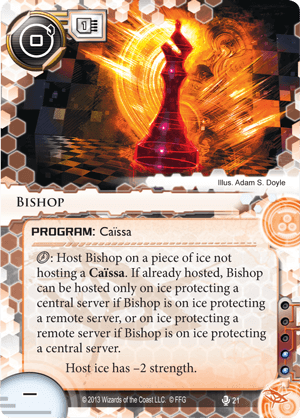
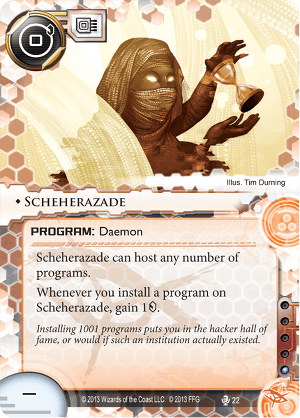
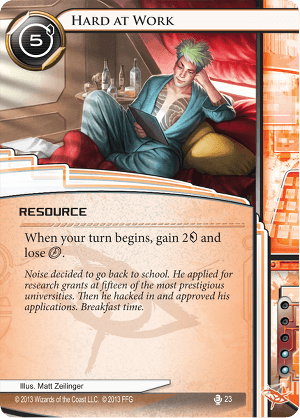
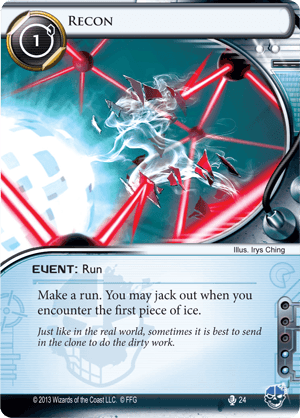
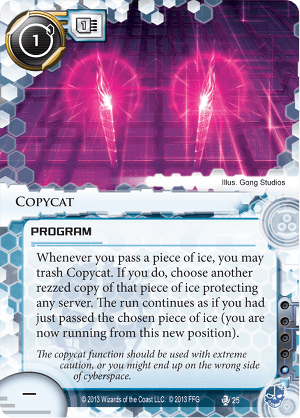
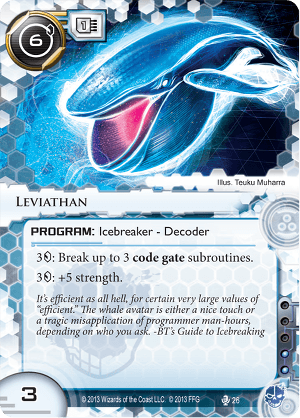
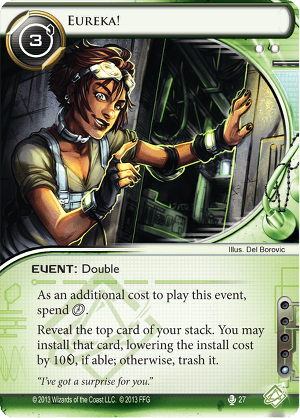
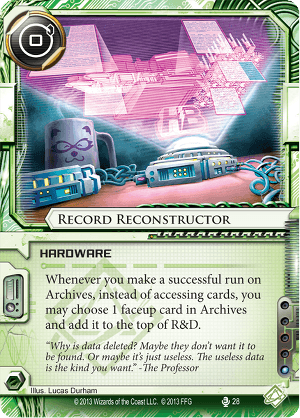
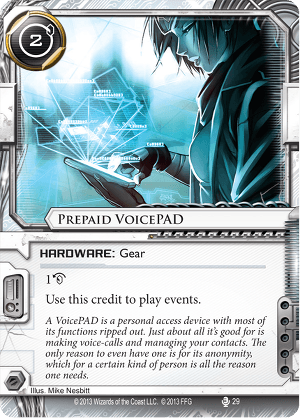
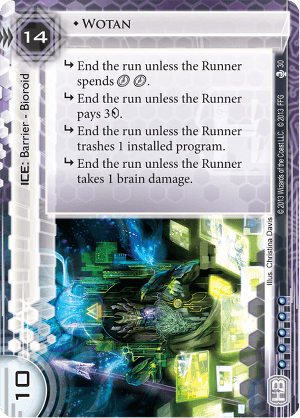
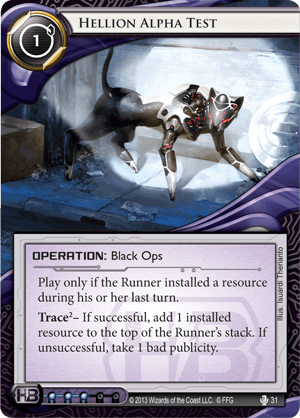
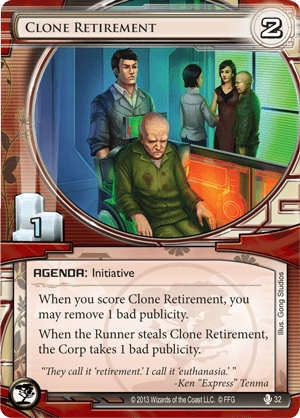
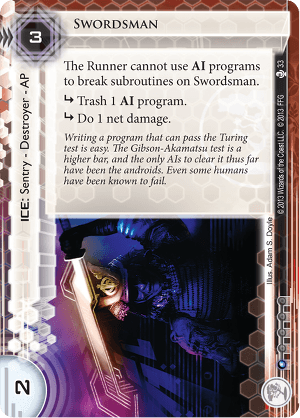
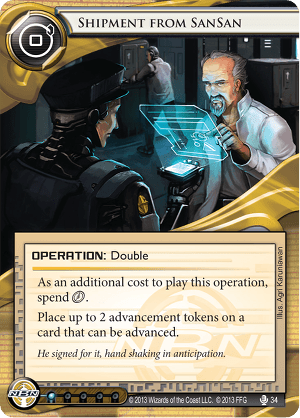
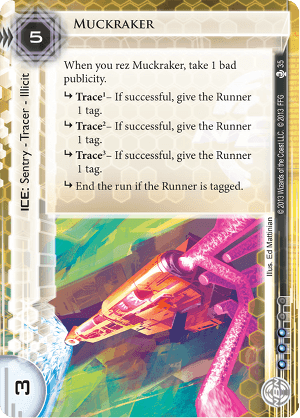
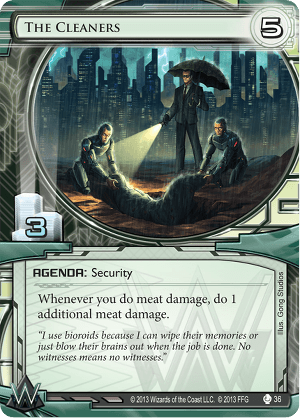
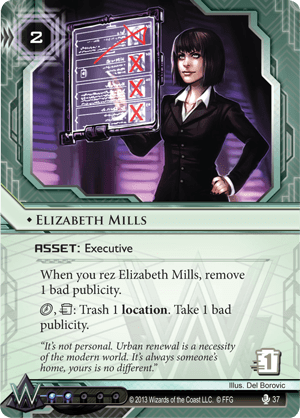
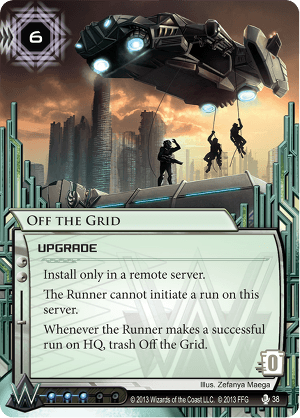
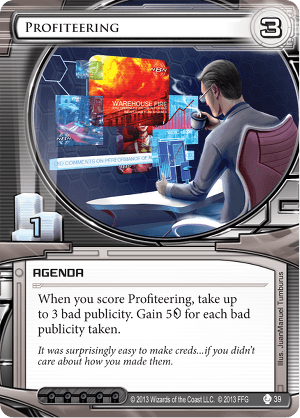
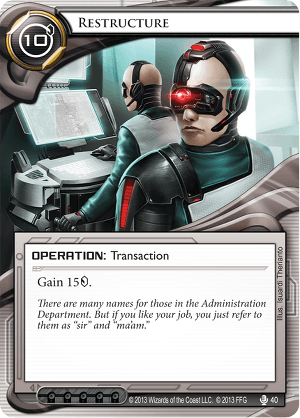
No comments:
Post a Comment